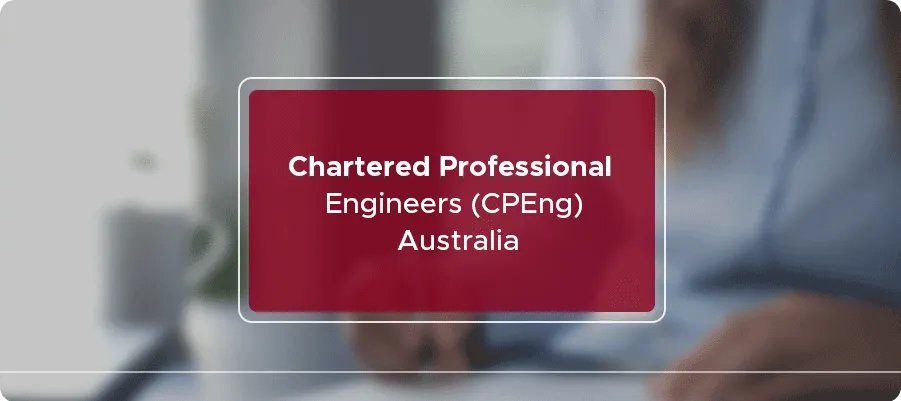
Tips on writing exceptional Career Episode
Career Episodes play an essential role in the CDR process. It helps you explain the projects you have worked on and highlight the competencies and skills in the process. You need to prepare three different career episodes for submission to Engineers Australia. You need to include three strategic projects on it. Here, I have listed tips on writing exceptional career episodes.
Every project should include all essential information rationally illustrating job specifications, responsibilities, roles, managerial or leadership activities, etc. The career episodes should highlight all the work and contributions of your work so that the EA assessors can analyze your report thoroughly. Engineers Australia is particular about the format of a Career Episode for CDR Report. Applicants can also find information about it in the Migration Skills Assessment Booklet.
If you have completed your Engineering degree from outside Australia, Engineers Australia tests your competency before allowing you to live and work in Australia. It is mainly to ensure that the individuals they allow must be able to work in the Australian Job market and not pose themselves as a liability to the country.
For this reason, EA devised the skills assessment process for Engineers who have yet to study in Australia using CDR. Through the three career episodes contained in the CDR, EA can gauge the extent of the applicant’s engineering skills. Thus an adequately enlisted Career Episode is essential if anyone wants to make sure that they get positively assessed for their migration to Australia by EA.
Importance of Career Episode in CDR Report
Career Episodes (CEs) are an essential part of Engineers Australia’s Competency Demonstration Report (CDR) and are used to demonstrate an engineer’s technical and professional skills, knowledge, and experience.
The significance of Career Episodes in the CDR process lies in furnishing detailed and specific standards with examples of the engineer’s work experience and how it aligns with the competency elements required for migration to Australia. The following are some of the imperative reasons why these episodes are essential:
- They provide evidence of competency: CEs demonstrate that an engineer has the essential technical and professional skills, knowledge, and experience to meet the standards of Engineers Australia.
- They demonstrate the engineer’s engineering practice: CEs supply detailed descriptions of the engineer’s work experience, including the challenges faced and the solutions implemented, exemplifying the engineer’s engineering practice.
- They demonstrate the engineer’s problem-solving abilities: CEs provide examples of their problem-solving skills by describing the challenges faced and the solutions implemented.
- They are employed to assess the engineer’s communication skills: Episodes estimate the engineer’s communication skills by evaluating the narrative’s clarity, conciseness, and logical structure.
- They can get used to identifying any gaps in an engineer’s competency: CEs can be used to identify any gaps in an engineer’s competency, which can then get addressed through further training or education.
Career episodes are a vital part of the CDR process, as they provide evidence of an engineer’s competency and demonstrate their engineering practice, problem-solving abilities, and communication skills.
Learn More: Skilled Employer Sponsored Regional Visa (Subclass 494) 📖📖
7 tips on writing exceptional Career Episode
Below is some guidance on how to compose an exceptional Career Episode (CE) for Engineers Australia’s Competency Demonstration Report (CDR):
1. Understand the requirements
Ensure you understand the Engineers Australia requirements before drafting your career episode and the competency elements that need to be demonstrated in your CE.
2. Select a relevant project or work experience.
Select a project or work experience relevant to your engineering field and demonstrates your technical and professional skills, knowledge, and expertise.
3. Employ an unambiguous and logical structure.
The Career Episode should have a straightforward and logical structure, including an introduction, background information, a description of your role and responsibilities, the challenges you faced, the solutions you implemented, and the outcomes achieved.
4. Choose specific examples and details.
Incorporate specific examples and details to demonstrate your capabilities, such as technical calculations, design specifications, and project timelines.
5. Use technical language
Use technical language and terminology appropriate for your engineering field, but ensure it is easy for a non-technical reader.
6. Select the provided template and guidelines.
Use the provided template and guidelines to ensure that your CE meets the required format and includes all the necessary information.
7. Proofread and revise and tailor the Career episode to your job
Make sure to proofread and edit your CE for grammar, spelling, and punctuation errors. It also gets recommended to be reviewed by a professional or someone familiar with the CDR process. Also, make sure to tailor your episode writing to the particular you are applying.
By following these tips, you can compose a special Career episode that effectively demonstrates your competency and meets the requirements of Engineers Australia.
Learn More: The Ultimate Guide to Write a Professional Career Episode ✈️✈️
More Guidelines on drafting career episode report
Choose projects that show the significance of your work and the organization, reflecting your skills and competencies. Below are some more guidelines on drafting career episode report:
- In the case of academic projects, choose the projects that have scope for future scalability and have a vital role in completing and achieving desired objectives.
- Please include all the engineering activities you have done or were a part of. The projects, internship experience, other competitions, etc., can also get elaborated, whereas applicants should highlight their role in the projects.
- The EA assessors watch for the individual’s contribution rather than the efficiency of the whole project.
- The charts, figures, etc., can be used to elaborate on your role in your project. That clearly shows the technical process of your work and your role in the project.
- The use of active voice is mandatory in the report. For example, “I prepared,” “I calculated,” etc.
- Take a reference from high-quality samples gets provided by experienced CDR Writers and top websites. The pre-approved samples from EA would be best for guidance purposes.
- Engineers Australia is very particular about the format of a career episode. So you can look for more information about it on the MSA (Migration Skills Assessment Booklet).
- Avoid technical language, random graphs, charts, etc. Use simple English language with relevant details, facts, achievements, etc.; every episode should be 1000-12500 words.
Writing a Career Episode is quite complicated, and getting help from a top professional with years of experience writing a successful CDR report is always better.
Learn More: Get maximum points in Australian Immigration ✈️✈️
Wrapping up
CDRReportwriters.com has a professional team of writers for delivering the perfect CDR to the engineers willing to get skilled visas from Australia. We also offer tutoring services and also assist you in every step of writing your CDR report. We ensure that all the information you provide is mentioned and perfectly presented in your CDR.
Not only that, but we also review CDRs written by you and make sure that your CDR report is just beyond perfect. Thus, we are not only limited to CDR writing services but also provide tutoring and reviewing services to help engineers to achieve their immigration dreams.





